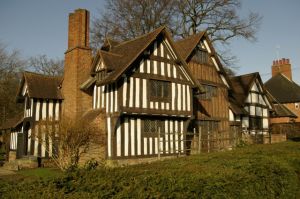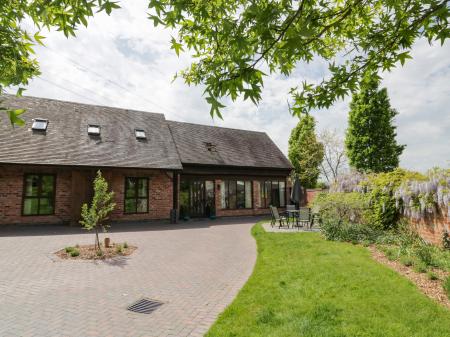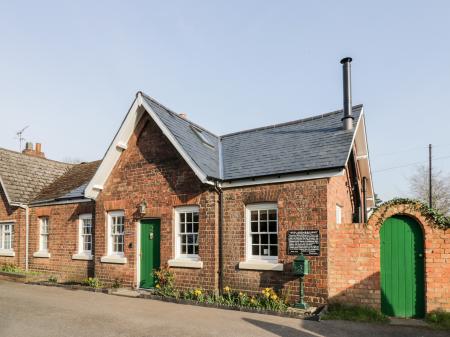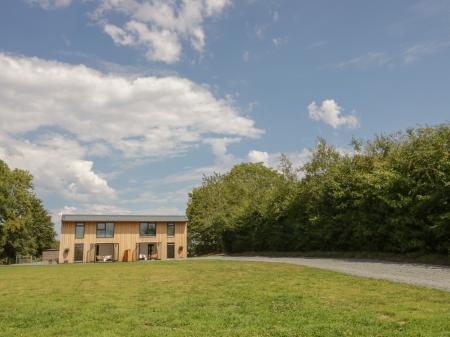
The manor house dates to at least 1327, and it contains a fine collection of Tudor and Stuart furniture and household objects collected by Laurence Cadbury, son of George. It was the home of the Jouette family, the local lords of the tithing, a sort of early tax collector.
The manor stands beside a second historic building, Minworth Greaves, a cruck-framed cottage dating to the 13th century. Minworth Greaves was also disassembled and moved to its current site in Bournville by the Cadburys. The pair of historic buildings stand in attractive gardens that accurately recreate a typical garden of the Tudor period.
Selly Manor stands three storeys high. The oldest section is built with timber framing, and walled with wattle and daub. The building was extended during the reign of Henry VIII with brick used to fill in between oak timbers. A smaller Elizabethan section is the 'newest' section of the house.
The interior has four main rooms on view, including the Parlour, Hall, Kitchen, and Solar Bedchamber. Minworth Greaves is a much simpler building, consisting of a single main chamber.
The village of Bournville was built by George Cadbury beside his chocolate factory and is only a short distance from Cadbury Chocolate World.
 We've 'tagged' this attraction information to help you find related historic attractions and learn more about major time periods mentioned.
We've 'tagged' this attraction information to help you find related historic attractions and learn more about major time periods mentioned.



